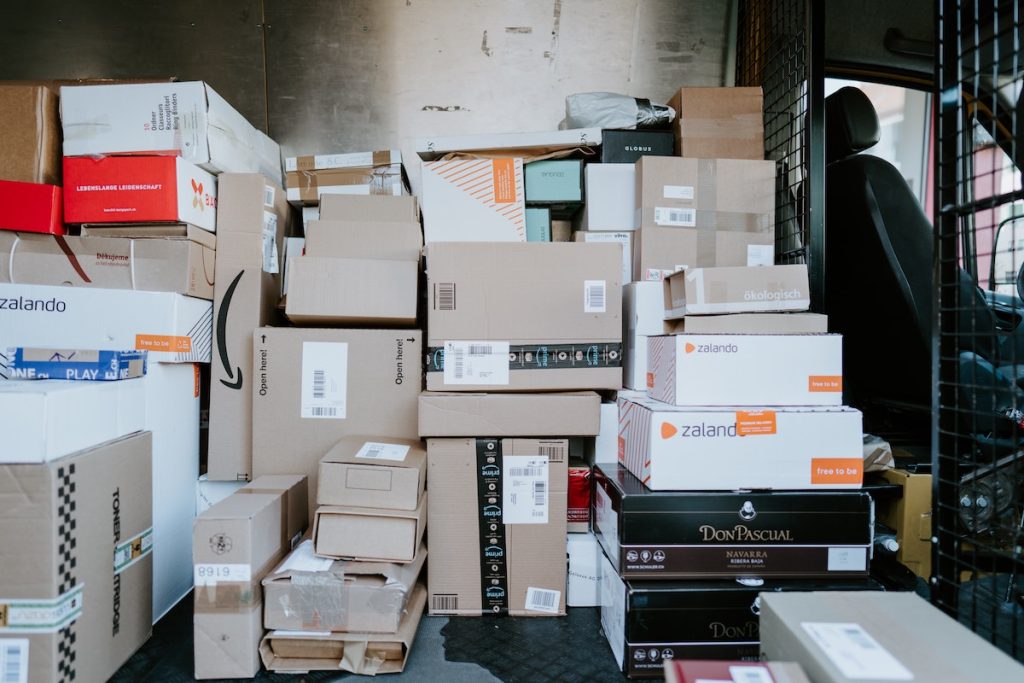As the e-commerce market continues to get more saturated, businesses are continuously brainstorming ways to stand out from the competition. One of the many ways businesses, especially the smaller ones, beat their competitors is through creative packaging.
To help build brand loyalty and foster a positive customer experience, considering how you pack and ship your boxed package goods should also be a priority.
Think about it: we live in a world of unboxing videos and product reviews. Part of the customer’s content in these videos discusses the packaging and the shipping process. Most small businesses have picked up on this trend and are now investing more resources and effort in cute packaging or frustration-free packaging.
A custom approach to boxed package goods might be pricier than buying standard shipping materials. But it’s a part of making your brand more memorable.
So instead of settling for a basic supply box or boring customers with basic packaging at product launches, why not wow your customers with unique packaging?
What are the Different Types of Packaging Materials?
Before you can dive into the world of small packaging business ideas, know the basic materials first.
When you need to package your products, decide on the type of material you want to use. Making the right choice in packaging is critical to the successful selling and distribution of your product. Some important factors to consider include the branding and design of the package, where the products will be distributed, how the package will be sold, logistics, returns, budget and other sustainability issues.
To ensure the good quality of your boxed package goods, consider the pros and cons of each packaging material type. Carefully evaluate your options and choose the packaging material that will offer the most benefits with the fewest drawbacks in the long run.
Different Packaging Material Types
Plastic
This well-known packaging material ranges from large clamshell containers to packing peanuts and everything in between. Most businesses choose plastic for its flexible quality; it can be manufactured to adhere to different needs. Plastic is durable, lightweight and flexible. It can be created to be opaque, transparent or food-safe.
One of the biggest cons of using plastic is that it can be difficult to recycle. According to National Geographic, 79 percent of plastic is accumulated in landfills.
Paper and Paperboard
When you think of boxed package goods or unboxing videos, you probably think of bags and boxes that show up on your door. Cardboard cartons, paperboard and paper are often used as packaging materials for products in stores.
For example, corrugated cardboard has top-quality structural stability for storing, shipping and marketing products. Since it’s easy to print on paper-based materials, you can easily incorporate your branding on the packaging. Also, cardboard and paper are easily recyclable, renewable and reusable, which is a plus for environmentally-conscious companies and consumers.
Although boxes and paper are flexible, lightweight and affordable, they aren’t as sturdy as other packaging materials. Still, they are easy to collapse for recycling, as well as stacking and storing.
Glass
Glass has been used in packaging for many years, particularly in the food industry, due to its non-toxic and non-porous material. Glass doesn’t leech into food and drinks; it also preserves the freshness and flavor of its contents for a longer period of time. The best part is it can be created to look aesthetically pleasing, plus it’s 100 percent recyclable!
The main disadvantage of glass is that it needs a great deal of energy and heat to manufacture, which results in high production costs and environmental problems. On top of these, shipping glass containers can be difficult since they can break in transit.
Aluminum
Aluminum packaging is versatile; this packaging type includes aluminum foil, cans and aerosol products. One of the pros of aluminum packaging is it is resistant to corrosion and offers excellent protection against UV rays, oxygen and oils. Businesses use aluminum to pack food and beverages, as well as medication.
This packaging type is durable, light and non-toxic in nature. It comes with thin barrier protection for food and beverages, which means fewer materials are used in the manufacturing of aluminum, saving you energy and resources.
What Are the Benefits of Boxed Packaging for Goods?
The different types of boxed packaged goods can keep your items safe during shipping and make them easy to store. They can also double as marketing materials. In fact, studies show that 72 percent of Americans consider packaging design as a crucial factor in their purchase decision.
So, if you’re thinking about boxing your goods, here are some benefits to consider.
Physical Protection
Good packaging offers good protection to your items. It avoids the damage due to dropping, vibration, extreme temperatures and more. Also, boxed packaged goods are protected from external elements like dust and humidity.
Easy Handling
If you don’t package your products properly, they might be difficult to store at the warehouse and handle during transit and delivery. Quality packaging can help the warehouse and distribution staff by including handles, which make transferring and handling easier.
Easy Identification
When products are in transit, they might get damaged or lost if not packed properly. Properly boxed packaged goods come with packing slips, which make it easier to identify and track the items.
Branding
Great packaging is one of the best marketing tools for any business. Many businesses offer customized packaging that creates a good image for the products (and, in turn, the business).
How Do I Pack a Product for Shipping?

To ensure your products are in good condition during transit (and that your box looks good for those unboxing videos), follow these steps:
- Assess your product’s requirements and choose the right packaging materials. Packages pass through multiple hands through their journey to the customer. With this in mind, packaging materials that doesn’t have the strength for your products could fall apart as people haul them from one transportation stage to another. To determine which materials you should use, consider the following factors:
- The product’s weight. The heavier the product, the stronger the packaging material should be. Check the strength of the box you’re using via the manufacturer’s stamp.
- The product’s size and shape. If you’re using a box, there should be enough space for cushioning material (e.g. packing peanuts).
- The product’s value and fragility. High-value and/or fragile goods require additional protection and cushioning. Place a FRAGILE label on the box for good measure.
- Wrap all items separately. If your box contains multiple items, wrap and cushion them separately to keep them from moving around so much. Items that could be damaged by water or dirt should be placed in a plastic bag.
- Cushion your products well. Make sure that there’s enough cushioning and filler material to keep the products from moving around during transit. When adding cushioning and filler material to your package, make sure the box has enough room for sufficient cushioning.
- Seal your box properly. Use the right tape with the right width. Avoid using strings or straps since these could damage heavier products. Seal your boxes with the H-taping method to keep your boxes from flapping during the delivery.
Small Business Packaging Ideas
How can your packaging stand out from other businesses and not miss out on marketing opportunities? All it takes is a bit of creativity and customization.
Consider the following ideas for your boxed package goods.
Shipping Container Customizations
- Exterior logo stickers. Add a touch of customization via logo sticker on the box. This is an affordable branding option since stickers are cost-effective and fun at the same time.
- Printed stock packaging. These boxes involve printing your logo or name outside of your box. This customization is a great way to increase your brand name’s recognition without adding a hefty price tag to your materials.
- Fully customized packaging. Fully customized boxes overhaul the traditional box look with the brand’s logo, design and more. This type of packaging is the most expensive, but it has the biggest impact since people love highly-customized items.
Package Insert Customizations
Apart from designing your product’s boxes, add creative custom touches inside of your packages. Wrap your product in fancy tissue, add a note, throw in some stickers — all of these steps can make the “unboxing” experience a special one.
Here are some ideas:
- Stickers or logo tags. Add a small personalized twist by adding custom stickers and logo tags. These tags are attached to less expensive trinkets, clothing or outside of the box.
- Offer cards and thank you notes. Adding a handwritten thank you note, attaching a coupon voucher or signing your name is an affordable way to add a personal touch to your packaging. Notes and cards offer another way for customers to engage with your business.
- Custom inner packaging and tissue paper. Another way to elevate your packaging is to wrap your products in custom inner packaging and tissue paper. Wrap glass goods in well-protected boxes, textiles or clothing in tissue paper and jewelry in cushioned containers.
Good and creative packaging elevates your brand experience and boosts customer recognition. Instead of just thinking about how your box can protect your goods, brainstorm ways to elevate the unboxing experience for your customers.


